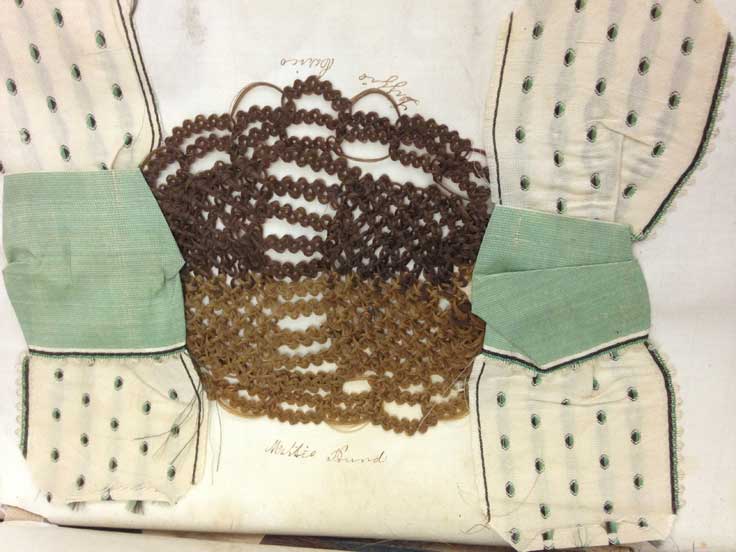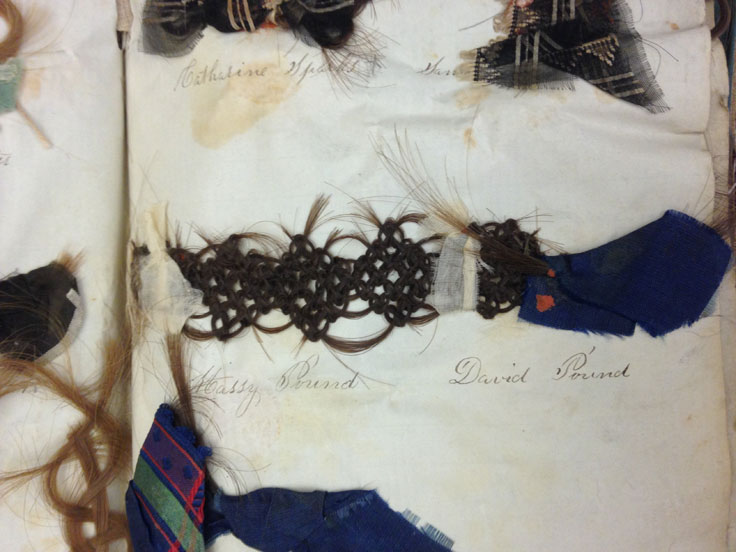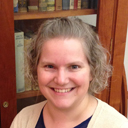
Purchase Tickets
Unlocking the Past
May 30, 2019

Did you save a lock of your child’s hair from their first haircut? Have you found mementos such as this when looking through family materials passed down through generations? These are pretty common occurrences, but if you are searching through materials from the 19th century, you may find even more elaborate pieces made from human hair.
In the Indiana Historical Society’s collections, we have jewelry made from hair. These pieces of hair art were very popular at the time they were created. Hair artists were listed in the business pages of some city directories to assist you in creating these keepsakes. Sometimes this was done in memoriam, but often it was just a way that some women chose to recognize their friends and family.
One of our most interesting pieces related to hair in our collections is the hair scrapbook kept by Elizabeth C. (Carr) Pound, who lived from 1835 to 1927. The scrapbook, which is embroidered with her initials and maiden name, has been filled with locks of hair as well as intricately worked pieces taken from her family and friends. Luckily, she chose to identify each hairpiece with the name of the person from whom she received the hair.

Since Ms. (Carr) Pound gathered the names as well as the hair, we can see what kind of geographic and chronological reach this collection has by researching those names. Of the samples included here, we have Massy (Sparks) Pound born in 1807 and her husband David Pound, who was born in 1800. The Pounds happen to be Elizabeth’s in-laws, the parents of her husband, Harvey. Another example is the intertwined hair of Mattie Pound and Lizzie Carico. It is quite likely that Mattie Pound is the sister-in-law of Elizabeth Carr Pound. Martha Pound was born in 1843. She married William Sparks in 1863, so it is probable that this particular hair sample was gathered before that date. More research is needed to determine the identity and connection to Lizzie Carico. The names researched so far typically have a tie to Vigo County.
Though some people find this tradition of the 19th century to be distasteful, it does add a level of interest to your family history research. Nineteenth-century photography, once it became more accessible, was black and white. What color hair did your great-great-great grandmother have? You may be able to guess if it was dark or light based on a photo you have seen, but do you know the exact shade? Maybe there isn’t even a picture available of that ancestor. These hair samples provide a nice, vibrant, visual window to your ancestor’s looks and locks.
I’ll be talking about how to do your genealogy research at the Indiana Historical Society at Midwestern Roots in July. Register today!









